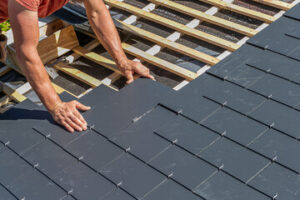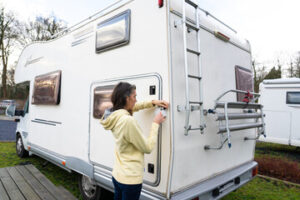Whether you are building a new home or expanding your backyard with a pool, deck or garden, construction projects require strong foundations. This is where excavation services come in.

When choosing Excavating Contractor consider their years of experience, necessary certifications and client references. Additionally, ensure that they offer a wide range of services and can effectively address your project needs.
Site preparation is the first step in construction and sets the stage for safety, efficiency, and quality. It includes a wide range of services from clearing the land to excavation and is the foundation for any construction project. Using professional site preparation methods helps minimize risk and ensures that the finished building will be structurally sound and durable for years to come.
A quality site preparation plan takes a number of factors into consideration, including soil testing, erosion control, and drainage. It also considers the presence of underground utilities, such as water pipes and power lines, to avoid hitting them during excavation. This step is particularly crucial when building in urban areas where there are many services and pipes running beneath the surface.
An excavating contractor can use a variety of equipment to prepare the construction site, including bulldozers and graders. They may also clear the area of debris, vegetation, and other obstructions to make room for construction. They also use site grading techniques to create a level surface for the new structure, which is vital for managing drainage and preventing water accumulation on the construction site.
Excavating contractors can also help with the installation of utilities and infrastructure, as well as soil stabilization, which is a key step in making sure that the construction site will be able to support heavy machinery and other construction activities without becoming unstable. Site preparation also includes implementing measures to mitigate environmental impacts, such as selecting low-emission machinery and ensuring that the work is done in accordance with environmental best practices.
Lastly, site preparation can also include relocating existing structures on the property or removing them entirely. This can be a complicated process, and it requires careful planning to avoid any unexpected challenges or issues that might arise during demolition or excavation. This phase can also involve arranging for the removal of hazardous materials, such as asbestos. An excavating contractor should be able to handle all of these tasks safely and with utmost professionalism. They should be able to obtain the proper permits for any demolition work and provide a clearance certificate to verify that the site is free of asbestos.
Earth Moving
Whether you are building a new home, installing a pool, or expanding your driveway, an excavation contractor is essential to your construction project. These professionals have the expertise and machinery to complete a wide range of excavation services, from site preparation to clearing and digging trenches. They also offer grading and earthmoving services to ensure the foundations of buildings and other structures rest on a stable, level base.
The most fundamental service that excavating contractors provide is site clearance, which involves clearing and preparing land for construction projects. This includes removing trees, brush, and debris to make way for new roads, buildings, and utility lines. It also involves excavating existing foundations and basements to prepare them for reconstruction or removal. This is one of the most important steps in a construction project and is vital to ensuring that all subsequent work will be done on a solid and safe basis.
Other excavation-related services that contractors can perform include demolition and debris removal, which is the process of tearing down old structures. Depending on the size and scope of the job, this may require the use of large-scale equipment, including excavators, front-end loaders, and bulldozers. Excavating contractors can also use specialized machines for demolition, such as hydraulic hammers, shears, and crushers, to dismantle old foundations and concrete slabs safely and efficiently.
In addition to performing excavation and demolition services, excavation contractors can also assist with land development and site paving. This involves laying the groundwork for infrastructure, such as roads, buildings, and utilities, by preparing and clearing land for construction, removing and replacing existing soil, and using specialized machinery to install asphalt and pavement.
When choosing a contractor to handle your excavation project, it is critical that you choose a licensed and insured company with a proven track record. You should also inquire about the contractor’s safety commitment and their knowledge of local zoning and excavation-related regulations. It is also helpful to ask for references and online reviews to see what past clients have had to say about the contractor’s professionalism and quality of work.
Final Grading
When building homes, commercial buildings, roads or other infrastructure, it is important that the ground work is done properly. That is where the expertise of an excavating contractor comes in. Excavating contractors provide a variety of services that include site planning, excavation, land development, utility trenching, grading, erosion control and demolition. The services offered by these experts are essential to the success of any construction project.
They begin their work by assessing the site and its features to determine how it can be best utilized for construction purposes. They then excavate holes and trenches based on architectural plans and engineering to carve out spaces for foundations and essential utilities that are needed to bring the project from concept to reality.
Using heavy equipment, such as bulldozers and motor graders, they then prepare the construction site by leveling the ground for laying the foundation. Then they install all necessary utilities, including water, sewage, electricity and gas. This step is crucial to ensuring that the construction process can begin in accordance with its scheduled timeline.
In addition, they also integrate vital infrastructure by digging trenches or conduits to accommodate underground systems and utilities. These components must be carefully laid out to ensure they are safely integrated into the construction site and that they can be easily accessed for future repairs and maintenance.
Finally, final grading fine-tunes the construction site by smoothing the surface with topsoil and sand. This helps to promote plant growth and improve the site’s appearance. It is a crucial step to making sure that the construction project’s final results are as intended and that they will be stable and long-lasting.
While choosing a grading contractor, it is essential to check their credentials and licenses before hiring them. Look for online directories and review websites to gather a list of potential candidates in your area. Then, request references from previous clients to see how they have worked with each grading contractor in the past.
Most importantly, choose a grading contractor that is fully licensed, insured and certified in Erosion and Sediment Control. This will ensure that they follow all the proper measures and precautions to protect the health and safety of their workers as well as the public at large. It will also help to minimize the risk of damage to public and private utilities and other infrastructure, which can be incredibly expensive to repair or replace.
Site Cleanup
An excavation contractor may also help you clean up the site once construction is complete. This includes removing all debris and returning the land to its original condition. This is important to ensure that your property is free of any hazards that could affect the safety of anyone who might visit it in the future. It is also crucial to protect the environment by ensuring that all materials are disposed of properly.
Before the construction of a new building can begin, an excavating contractor is responsible for digging the foundation trenches. This process is vital as it establishes a solid base for the structure, which can prevent issues such as structural instability and cracking walls. Excavating contractors use heavy equipment to carry out this work. They must be skilled and have the right amount of experience to operate these types of machines.
A construction project is an inherently risky undertaking. An excavation contractor must be able to handle this risk by developing and implementing a plan that reduces the potential for accidents. This typically involves the use of spotters and physical barriers to control access and limit vehicle movements around the job site. The contractor must also abide by all local and state regulations regarding the operation of machinery and the use of hazardous materials.
Depending on the location and scope of an excavation, it may require advanced planning. This includes the preparation of a detailed excavation plan that specifies the specific methods and techniques to be used, as well as the equipment and machinery required. It should also include a schedule of activities and how the work will be carried out.








